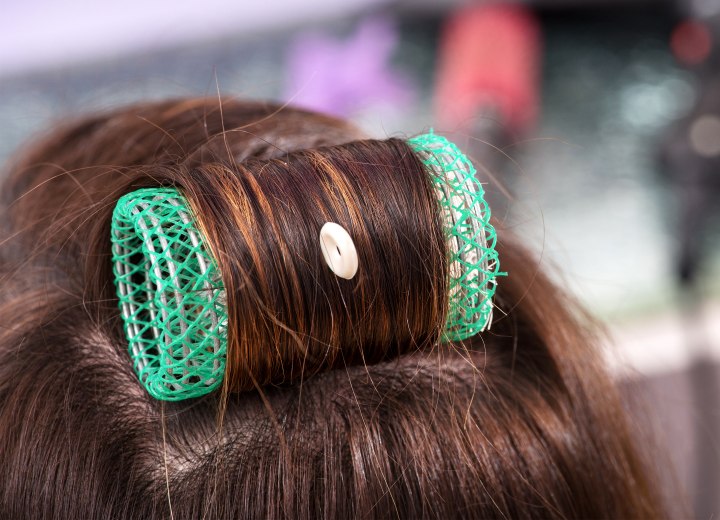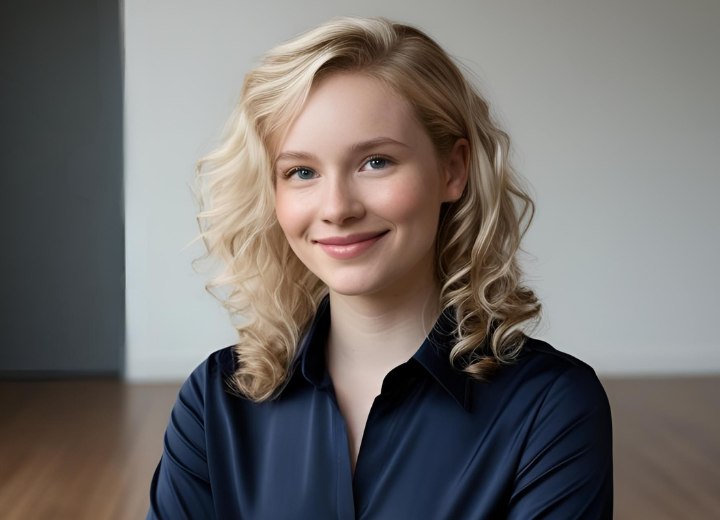Roller Curl vs. Stand Up Curl

A: These two curling methods represent fundamentally different approaches to achieving beautiful curls, each with its own advantages and ideal applications.
Roller curls
A roller curl is exactly what it sounds like: a curl created by wrapping damp or product-treated hair around a cylindrical roller. These rollers are typically made from materials like foam, plastic, or metal, and many feature perforations that allow air to circulate through them, promoting faster and more even drying. The process works by breaking down and reforming the hair's natural physical bonds that determine your hair's natural texture and shape.
The roller method offers several distinct advantages. First, it provides exceptional longevity. Curls created with rollers typically last longer than those made with other techniques. Second, rollers can handle large sections of hair at once, making them efficient for creating an all-over curled look. Finally, since the hair dries in the desired shape, there's minimal heat damage compared to curling irons or other heated styling tools.
Stand up curls
A stand up curl, also called a barrel curl or pin curl, represents a more artisanal approach to hair styling that requires no special equipment beyond your fingers and some basic securing tools. This technique involves taking a section of damp hair and carefully winding it around your finger to create a compact, barrel-shaped coil. Once you've formed the desired shape, you gently slip your finger out of the center, leaving behind a perfect spiral that you then secure against your scalp using bobby pins, clips, or even small hair ties.
The beauty of stand up curls lies in their versatility. Since you're using your finger as the curling tool, you have complete control over the size and tightness of each curl - something that's harder to achieve with standardized rollers. You can create varying curl sizes throughout your hair for a more natural look, or maintain consistency for a more polished appearance.
This method requires more skill and patience than roller curls, as each section must be carefully wound and positioned by hand. However, the results can be incredibly rewarding. Stand up curls often have a distinctive vintage charm that's perfect for retro-inspired looks or when you want curls with character rather than uniform perfection.

Regardless of which method you choose, proper preparation is crucial for achieving the best results. Start with clean, damp hair that's been treated with a curl-enhancing product or light-hold mousse. The hair should be moist enough to be pliable but not soaking wet, as excess water can prevent proper bond reformation and lead to weak, short-lived curls.
For roller curls, work in systematic sections from bottom to top, ensuring each piece of hair is evenly distributed around the roller with no overlapping or bunching. Take care not to wind the hair too tightly, as this can create unwanted creases or cause discomfort.
When creating stand up curls, maintain consistent tension as you wind each section around your finger, and be sure to secure each curl firmly against your scalp to prevent it from loosening as it dries. The key is finding the right balance between security and comfort: tight enough to hold the shape, but not so tight that it pulls uncomfortably on your scalp.
Both techniques require patience during the drying process. Rushing this step by using excessive heat or removing the curls before they're completely dry will result in curls that fall flat quickly. Allow plenty of time for natural air drying, or use a diffuser on low heat if you're in a hurry.
With practice, both roller curls and stand up curls can become valuable tools in your hair styling repertoire, each offering unique benefits for creating beautiful, long-lasting curls.
©Hairfinder.com